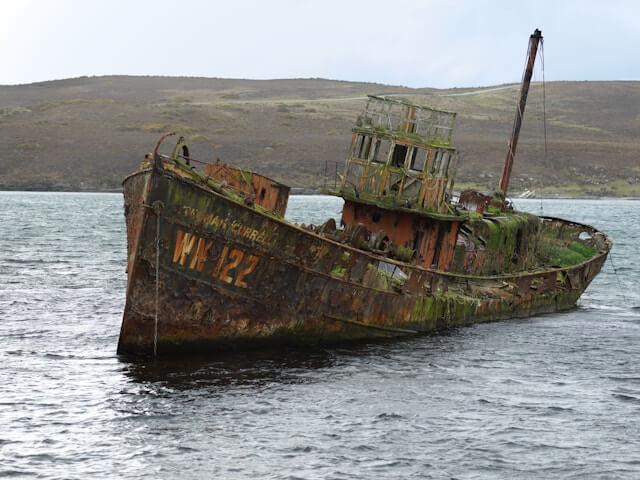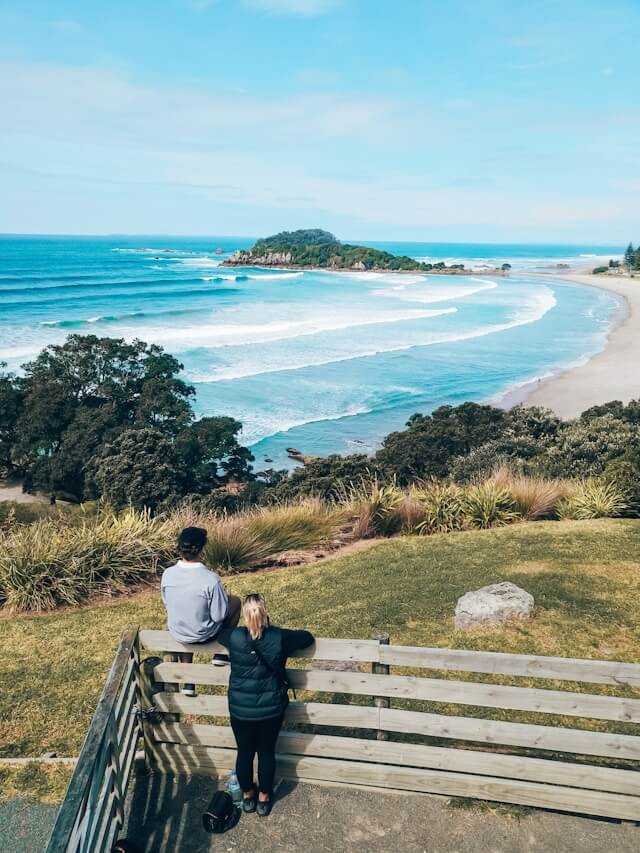With its rugged terrain, unique wildlife, and rich history, navigating New Zealand’s remote Chatham Islands offers a truly unforgettable experience for travelers seeking adventure off the beaten path.

Situated 800 kilometers east of the South Island, these isolated islands are a haven for nature lovers and history enthusiasts alike.
One of the most striking features of the Chatham Islands is their diverse landscape, which ranges from windswept beaches to lush forests and rolling hills.
This varied terrain is home to a wide array of endemic plant and animal species, including the iconic Chatham Island forget-me-not and the endangered Chatham Island taiko seabird.
Exploring the islands’ natural beauty provides a rare opportunity to witness these unique ecosystems up close.
In addition to their natural wonders, the Chatham Islands also boast a rich cultural heritage dating back centuries.
The Moriori people, who originally settled the islands, have a fascinating history that is still celebrated today through various cultural events and traditional practices.
Visitors can immerse themselves in this rich cultural tapestry by engaging with local communities and learning about the islands’ unique heritage.
In the next part of this article, we will delve deeper into the history and culture of the Chatham Islands, exploring the impact of colonization and the ongoing efforts to preserve and promote indigenous traditions.
By gaining a deeper understanding of the islands’ past and present, travelers can truly appreciate the significance of this remote and remarkable destination.
Research and plan your visit beforehand
Before heading to the Chatham Islands, it is important to do your research and plan your trip accordingly.
Take note of the ferry schedules, accommodation options, and activities available on the islands.
Since the Chathams are quite remote, it is crucial to be well-prepared to make the most of your visit.
Book accommodations in advance
Accommodations on the Chatham Islands can be limited, especially during peak tourist seasons.
It is recommended to book your accommodations well in advance to secure a place to stay during your visit.
Whether you prefer a cozy bed and breakfast or a self-contained cottage, ensure you have your accommodations booked before arriving on the islands.
Respect the local wildlife and environment
The Chatham Islands are home to unique wildlife and ecosystems, so it is important to respect and protect the environment during your visit.
Be mindful of any restrictions or regulations in place to protect the local wildlife and refrain from disturbing or feeding any animals you encounter.
By being a responsible visitor, you can help preserve the natural beauty of the Chatham Islands for future generations to enjoy.
Be prepared for changing weather conditions
The weather on the Chatham Islands can be unpredictable, with strong winds, rain, and fog common throughout the year.

Be prepared for changing weather conditions by packing appropriate clothing and gear for your visit.
It is always a good idea to have waterproof layers, sturdy footwear, and sun protection on hand to ensure you are comfortable during your explorations on the islands.
Embrace the slower pace of island life
Life on the Chatham Islands moves at a slower pace compared to mainland New Zealand, so be prepared to embrace the laid-back lifestyle during your visit.
Take the time to relax, unwind, and appreciate the natural beauty that surrounds you.
Whether you choose to go fishing, birdwatching, or simply enjoy the stunning scenery, allow yourself to fully immerse in the tranquil atmosphere of the Chatham Islands.
Exploring the Remote Chatham Islands: Pros to Consider
One of the major advantages of navigating New Zealand’s remote Chatham Islands is the opportunity to experience untouched natural beauty.
The pristine beaches, rugged coastline, and diverse wildlife make these islands a paradise for nature lovers and photographers alike.
Visitors can explore the unique landscape and observe rare bird species in their natural habitats.
Another benefit of visiting the Chatham Islands is the chance to immerse yourself in Maori culture.
The islands are rich in Maori history and traditions, offering a glimpse into the unique heritage of the indigenous people of New Zealand.
Visitors can participate in cultural activities, learn about traditional practices, and interact with local Maori communities.
Traveling to the Chatham Islands also provides a sense of adventure and seclusion.
The islands are located far off the beaten path, offering a quiet and peaceful escape from the hustle and bustle of city life.
Visitors can enjoy the tranquility of the remote landscapes, explore hidden gems, and disconnect from the stresses of everyday life.
Overall, navigating New Zealand’s remote Chatham Islands offers a one-of-a-kind travel experience filled with natural beauty, cultural enrichment, and unparalleled adventure.
Whether you’re seeking relaxation, exploration, or a deeper connection to nature, the Chatham Islands have something to offer every type of traveler.
Cons of Navigating New Zealand’s Remote Chatham Islands
1. Limited transportation options: Navigating the Chatham Islands can be quite challenging as there are limited transportation options available. With only a few flights per week and infrequent ferry services, getting to and around the islands can be difficult and time-consuming.
2. Unpredictable weather conditions: The Chatham Islands are known for their unpredictable weather patterns, which can make travel planning tricky. Storms and strong winds are common occurrences, leading to disruptions in transportation schedules and potentially ruining outdoor activities.
3. Limited accommodation choices: As a remote destination, the Chatham Islands have limited accommodation choices for visitors. This can result in higher prices, fully booked accommodations, or subpar lodging options, making it challenging to find suitable places to stay.
4. Limited amenities and services: Due to the islands’ remote location, visitors may find a lack of amenities and services compared to more urbanized areas. This can include limited dining options, medical services, shopping opportunities, and recreational facilities, making it difficult to access basic necessities.
5. Limited internet and phone connectivity: Navigating the Chatham Islands can be frustrating for those who rely heavily on internet and phone connectivity. Due to the remote location, the islands may have limited or unreliable coverage, making communication and staying connected with the outside world challenging.
6. Isolation and limited social interactions: The remote nature of the Chatham Islands can lead to feelings of isolation for visitors, especially those accustomed to more populated areas. Limited social interactions and cultural experiences may make it difficult for some travelers to fully enjoy their time on the islands.
Conclusion
Visiting New Zealand’s remote Chatham Islands offers travelers an unparalleled opportunity to immerse themselves in untouched natural beauty, rich cultural heritage, and unparalleled adventure.
Despite challenges such as limited transportation options, unpredictable weather conditions, and sparse amenities, the rewards of exploring these remote islands far outweigh the cons.
With proper planning and an open mind, visitors can experience a truly unforgettable journey filled with unique experiences and unforgettable memories.
FAQs
How can travelers reach the Chatham Islands?
Travelers can reach the Chatham Islands by taking a two-hour flight from Auckland, Wellington, or Christchurch to Chatham Island.
Air Chathams operates regular weekday flights to the islands, with additional flights to Pitt Island, a neighboring island, available via a small six-seater plane.
What are some key facts about the Chatham Islands?
The Chatham Islands consist of two main islands, Chatham Island and Pitt Island, located approximately 800 kilometers east of New Zealand.
With only 660 local residents and around 2,000 visitors per year, the islands offer a remote and unique experience.
The time zone on the islands is 45 minutes ahead of the mainland, and the currency used is the New Zealand dollar.
Notably, there are no taxis on the islands, so visitors need to organize transport with their accommodation hosts.
What is the historical significance of the Chatham Islands?
The Chatham Islands were first inhabited by the Moriori people, followed by European sealers, whalers, and Māori from the New Zealand mainland.
Descendants of the Moriori still live on the islands, and visiting Kopinga Marae provides insights into Moriori culture, language, traditions, and community events.
The marae’s design represents an albatross in flight, a bird of great cultural significance to the Moriori people.
What activities and attractions can visitors enjoy on the Chatham Islands?
Visitors to the Chatham Islands can engage in various activities such as fishing charters, exploring lagoon shores for ancient fossils, visiting historic sites like Glory Bay and Glory Cottage on Pitt Island, and experiencing the unique geology of basalt columns, volcanic cones, and red tuff cliffs.
Additionally, visitors can tour the Chatham Island Food fish processing plant, view seabird conservation efforts at the Taiko Trust and Gap Sanctuary, and enjoy the picturesque landscapes and wildlife of the islands.
What accommodation options are available on the Chatham Islands?
Accommodation options on the Chatham Islands include Hotel Chatham, Chatham Rise Motels, Awarakau Lodge, Black Robin Homestay, and baches in outlying villages like Owenga, Kaingaroa, and Port Hutt.
For those looking to stay on Pitt Island, Flowerpot Lodge offers quality accommodation.
Due to limited accommodation and transport options, it is essential to book tours and lodging well in advance when visiting the Chatham Islands.